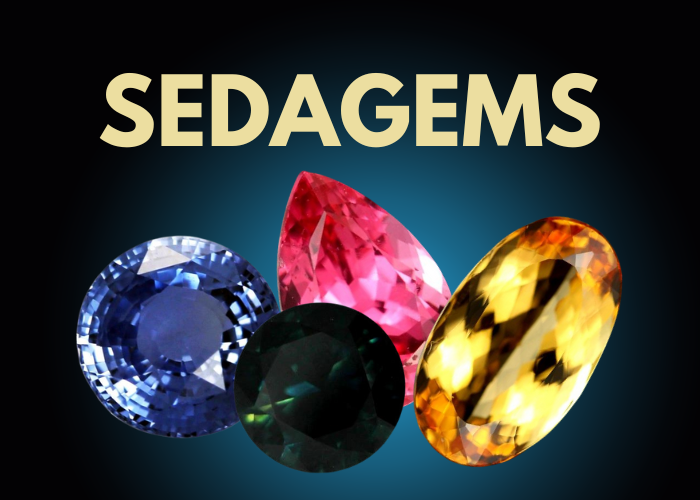あなたはこのオークションに入札していません。
30.54 CTS ALEXANDRITE - SPECIMEN FROM TANZANIA [S-SAFE263]
- SKU
- 寸法(mm)
- 19.000 x 12.000 x 12.000mm
- 重さ (CT)
- 30.540
- タイプ
- Specimen
- 色
-
ALEXANDRITE SPECIMEN
This is a natural untreated Alexandrite specimen from Tanzania which i bought from the miner on my last trip there. They are not suitable for faceting but can be cabbed or kept as a specimen.
The most sensational feature about this stone, however, is its surprising ability to change its colour. Green or bluish-green in daylight, alexandrite turns a soft shade of red, purplish-red or raspberry red in incandescent light. This unique optical characteristic makes it one of the most valuable gemstones of all, especially in fine qualities.
Alexandrite is very scarce: this is due to its chemical composition. It is basically a chrysoberyl, a mineral consisting of colourless or yellow transparent chrysoberyl, chrysoberyl cat’s eye and colour-changing alexandrite (also in cat’s eye varieties). It differs from other chrysoberyls in that it not only contains iron and titanium, but also chromium as a major impurity. And it is this very element which accounts for the spectacular colour change. Rarely, vanadium may also play a part. According to CIBJO nomenclature, only chrysoberyls displaying a distinct change of colour may be termed alexandrite.
Like many other gemstones, alexandrite emerged millions of years ago in a metamorphic environment. But unlike many others, its formation required specific geological conditions. The chemical elements beryllium (a major constituent in chrysoberyl) and chromium (the colouring agent in alexandrite) have contrasting chemical characteristics and do not as a rule occur together, usually being found in contrasting rock types. Not only has Nature brought these contrasting rock types into contact with each other, but a lack of the chemical element silica (the second most common element in the Earth’s crust) is also required to prevent the growth of emerald. This geological scenario has occurred only rarely in the Earth’s history and, as a result, alexandrite crystals are very scarce indeed.
- SKU
- 寸法(mm)
- 19.000 x 12.000 x 12.000 mm
- 重さ (CT)
- 30.540
- タイプ
- Specimen
- 色
-
ALEXANDRITE SPECIMEN
This is a natural untreated Alexandrite specimen from Tanzania which i bought from the miner on my last trip there. They are not suitable for faceting but can be cabbed or kept as a specimen.
The most sensational feature about this stone, however, is its surprising ability to change its colour. Green or bluish-green in daylight, alexandrite turns a soft shade of red, purplish-red or raspberry red in incandescent light. This unique optical characteristic makes it one of the most valuable gemstones of all, especially in fine qualities.
Alexandrite is very scarce: this is due to its chemical composition. It is basically a chrysoberyl, a mineral consisting of colourless or yellow transparent chrysoberyl, chrysoberyl cat’s eye and colour-changing alexandrite (also in cat’s eye varieties). It differs from other chrysoberyls in that it not only contains iron and titanium, but also chromium as a major impurity. And it is this very element which accounts for the spectacular colour change. Rarely, vanadium may also play a part. According to CIBJO nomenclature, only chrysoberyls displaying a distinct change of colour may be termed alexandrite.
Like many other gemstones, alexandrite emerged millions of years ago in a metamorphic environment. But unlike many others, its formation required specific geological conditions. The chemical elements beryllium (a major constituent in chrysoberyl) and chromium (the colouring agent in alexandrite) have contrasting chemical characteristics and do not as a rule occur together, usually being found in contrasting rock types. Not only has Nature brought these contrasting rock types into contact with each other, but a lack of the chemical element silica (the second most common element in the Earth’s crust) is also required to prevent the growth of emerald. This geological scenario has occurred only rarely in the Earth’s history and, as a result, alexandrite crystals are very scarce indeed.
| 配送業者 | 配送先Australia | その他の国への配送 |
|---|---|---|
| FedEx | $12.00 / 3 | $39.00 / 10 |
|
:国
FedEx 、 2以上のアイテムを含む注文で$12.00に割引されます
世界のその他の地域
FedEx 、 2以上のアイテムを含む注文で$39.00に割引されます
|
||
| Registered Shipping | $9.00 / 7 | $16.00 / 21 |
|
:国
Registered Shipping 、 2以上のアイテムを含む注文で$9.00に割引されます
世界のその他の地域
Registered Shipping 、 2以上のアイテムを含む注文で$16.00に割引されます
|
||

-
 ポジティブ
ポジティブPaid and shipped - no feedback left after 100 days
-
 ポジティブ
ポジティブVery special item, rare. Thanks an Happy New Year from Germany.
-
 ポジティブ
ポジティブBeautiful stone, perfect packaging, fast shipment, recommendable seller.
-
 ポジティブ
ポジティブIncredible stone, never seen before. Thank you from Germany. Will order again Dr. Rainer (medical doctor from Duisburg/Germany)
-
 ポジティブ
ポジティブNice stone, perfect packaging, fast shipping, recommendable.
-
 ポジティブ
ポジティブBeautiful small mini, thanks and a good and healthy 2025.
なぜユーザーは自分自身を上回る入札をするのでしょうか?
入札が行われる場合、これはその商品に対して入札者が入札する最高額となります。その後、当社のシステムは入札者に代わって自動的に入札し、最高額まで入札額を段階的に引き上げていき、最高入札者としての地位を維持します。
「自動入札」を示すアイコンがある場合、当社のシステムが入札者の最高入札額に基づいて入札者に代わって入札を行っていることを意味します。入札者が自らの入札額を上回る入札をしているように見えるかもしれませんが、これは入札者の最高額を反映するようにシステムが入札額を更新した結果にすぎません。




![30.54 CTS ALEXANDRITE - SPECIMEN FROM TANZANIA [S-SAFE263]](https://liveplatforms-production.b-cdn.net/tenants/gr/uploads/images/860000-864999/862325/5c3582c1bc1ec.jpg?width=480&aspect_ratio=1001%3A1000)
![44.45 CTS FIRE AGATE NATURAL SPECIMEN [MGW5613]](https://liveplatforms-production.b-cdn.net/tenants/gr/uploads/images/1135000-1139999/1137304/5e55d98bec082.jpg?width=480&aspect_ratio=1001%3A1000)
![173.20 CTS AMETHYST CHOCOLATE SPECIMEN [MGW4114]](https://liveplatforms-production.b-cdn.net/tenants/gr/uploads/images/395000-399999/398510/52cf8c692d487.JPG?width=480&aspect_ratio=1001%3A1000)
![66 CTS TOURMALINE MUSHROOM SPECIMEN BURMA [MGW2471]](https://liveplatforms-production.b-cdn.net/tenants/gr/uploads/images/305000-309999/306719/306719_1351580779.jpg?width=480&aspect_ratio=1001%3A1000)
![35.50 CTS LEPIDOLITE SPECIMEN FROM BRAZIL - [MGW2097]](https://liveplatforms-production.b-cdn.net/tenants/gr/uploads/images/280000-284999/281088/281088_1341207258.jpg?width=480&aspect_ratio=1001%3A1000)




![TOURMALINE PINK STONE 0.55 CTS [S4120 ]](https://liveplatforms-production.b-cdn.net/tenants/gr/uploads/images/85000-89999/85117/85117_1236728067.jpg?width=480&aspect_ratio=1001%3A1000)
![TOURMALINE PINK STONE 0.70 CTS [S4123 ]](https://liveplatforms-production.b-cdn.net/tenants/gr/uploads/images/85000-89999/85124/85124_1236728367.jpg?width=480&aspect_ratio=1001%3A1000)
![TOURMALINE PINK STONE 0.65 CTS [S4126 ]](https://liveplatforms-production.b-cdn.net/tenants/gr/uploads/images/85000-89999/85129/85129_1236728721.jpg?width=480&aspect_ratio=1001%3A1000)